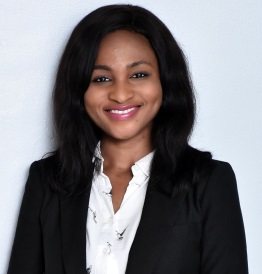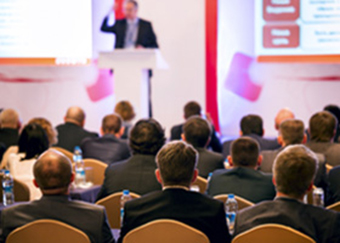

Since 2010, the Global Law Experts annual awards have been celebrating excellence, innovation and performance across the legal communities from around the world.
posted 4 years ago
Introduction
Copyright confers on the creator of a work of authorship an
exclusive right to use and control the use of a protected material. Works
eligible for copyright protection include: literary works such as novels,
poems, plays, reference works, newspaper articles; computer programs, software,
databases; films, musical compositions, and choreography; artistic works such
as paintings, drawings, photographs, and sculpture; architecture; and
advertisements, maps, and technical drawings.
The Artificial intelligence (“AI’’) system is gradually
becoming a global phenomenon with increasing significance and relevance in
almost every facet of human society/activity. Copyright protects the software
programmes which make up the “building blocks” of the AI system. With the
growth in the current trends coupled with continuous research and development
of the AI systems, machines and Al computer programmes are predicted to become
the major creators and inventors of the future. This raises a very
important question; who would own the works produced by these computers?
Copyright Over AI Inventions
The term “Artificial Intelligence” which was first coined in
1956 by John McCarthy is defined by the English Oxford Living Dictionary as
“the theory and development of computer system, able to perform tasks normally
requiring human intelligence, such as visual perception, speech recognition,
decision making and translation between languages”. In simple terms, it is “the
capability of a machine to imitate intelligent human behaviour”.
Al is now largely being employed in the creation of
copyrightable work worldwide and it is used as a tool to enhance human
creativity. These machines and software applications also possess creative
abilities like human and can create artistic designs, literary works, and
news articles and even compose/generate music. In fact, some of these
computers participate in competitions with humans; a short novel written by
a Japanese computer program in 2016 reached the second round of a
national literary prize. This awesome ability is as a result of built-in
algorithms giving them the capabilities to learn from data inputs and as a
result, evolve and make decisions. These decisions may either be instructed or
independently made by the computer programme. This development of intelligent
machines, however, comes with attendant legal challenges.
Traditionally, the authorship or ownership of copyrightable
works which are computer-generated was not in doubt. The popular belief is that
since a computer is a man-made invention, it is deemed as a tool in the hand of
a human creator, consequently authorship of the resultant work would belong to
the human creator. The current impact of Al is starting to disrupt this
seemingly rigid traditional presumption.
The question of who should own the copyright of an Al creative
work is still largely unanswered. There are divergent views on the point. The
current position of copyright legislations worldwide is that human authorship
is an indispensable requirement for copyright protection. Most copyright
jurisdictions across the world only recognise natural persons and registered
corporations as authors who are entitled to appropriate both economic and moral
rights over the created work. In England, the Copyright Design and Patent Act
makes provision for computer-generated works. It provides that the author
of a computer-generated work is the person by whom the arrangements for the
creation of the work were undertaken. The Act grants the author 50 years
protection but does not include moral rights. In New Zealand, copyrights
on works made by machines, belong to “whoever has undertaken the necessary
provisions for the creation of the work.” In other words, copyright in
such work will not be conferred on the machine/Al but on the person who
created the machine. This same position holds true in the USA and Spain.
In Nigeria, copyright is conferred only on a qualified person
i.e. an individual who is a citizen of or who is domiciled in Nigeria or an
incorporated entity registered under Nigerian law. Although the Nigerian
Copyright Act makes no reference to computer-generated works, it can be deduced
from the Act that only humans are capable of owning copyright over a work.
Therefore, where a work is created by a machine in Nigeria, the copyright in that
work will be conferred on the human inventor or programmer.
In addition to the above, the popular belief is that the ability
of an Al to “independently” create copyrightable content is limited, in the
sense that the invention by an Al more often than not, originates from the
initial instructions or data feed to the Al by the human being, i.e., the Al
makes inventions based on the instructions programmed by the human being in the
form of algorithms on which the Al operates. There is always a human input
in the creativity process, no matter how minute, and although such human agent
may not contribute to the actual creative or expressive form, he or she often
predicts the end-result of the activity. Therefore, since the creative process
of Al works are usually initiated by a human, it suffices to say that the
copyright in the work should belong to the human creator. Furthermore, one of
the major incentives for investments in the research and development of Al is
the acquisition of proprietary rights in the eventual outputs of the Al.
The position of the law that only humans can own copyright was
strongly affirmed by the US Court of Appeal in the notorious “Monkey Selfie”
case. In that case, a UK Wildlife photographer, David Slater had in July 2011,
visited a wildlife park in Indonesia to take unique pictures of some rare
macaque monkeys. At some point, he intentionally left his camera on a tripod
for the monkeys to explore as they seemed curious. One of the monkeys named
Naruto, took the camera and snapped “selfies” of itself. David Slater then
went on to print and publish several copies of the pictures. An animal rights
group, People for the Ethical Treatment of Animals (PETA) sued Slater in 2015
on behalf of Naruto for copyright infringement. The Ninth Circuit Court of
Appeals upholding the judgment of the lower Court dismissed the appeal by PETA
and held that copyright protection cannot be granted to animals, being a
non-human entity. This case clearly reinforces the general rule that non-human
entities such as Al and other machines, are not entitled to copyright
protection.
There are, nonetheless, some dissenting opinions to the above
position. For example, Simon Colton, the creator of “The Painting Fool”, an AI
which paints excellently well believes that artificial intelligence should be
accorded authorship over the creations it makes. According to him, “If
artificial intelligence is not the material owner of the fruit of its work,
then it will never be more than a tool, a means of production, that software is
taken seriously as a creative entity is the ultimate goal of computer
creativity”. Agitations are also sprouting at different levels on the need
to revisit the global intellectual property law regime in view of the need to
attribute copyright or other IPRs to the rightful inventor or creator – the AI!
An international team led by a professor Ryan Abbott of the University of
Surrey United Kingdom filed patent applications in the US, UK and the European
Patent Office naming the AI system as the sole inventor. According to him, the
Al had created the unique designs without any human contribution.
It is also worthy of note that in January 20, 2015, the European
Union formed a committee on legal issues related to the evolution of robotics
and artificial intelligence. The committee proposed some Civil Law rules which
was intended to guarantee the legal status of robots, which are granted the
status of “electronic persons”. The proposal stated that “the most
sophisticated autonomous robots could receive the status of an electronic
person, with specific rights and obligations, including to amend damages they
cause”.
Conclusion
The impact and continuous relevance of Al in medicine, art,
music, sports etc, is no longer deniable, even in Nigeria. Recently,
Globacom announced its plans to launch Artificial Intelligences in its telecoms
services in Nigeria. The company reportedly remarked that “the AI platform
would engage customers directly and assist them to get information on pressing
issues.” The Glo AI platform, which will be the first of its kind in the local
telecoms sector, will enable conversation in English and Pidgin through voice
& text.
In the nearest future, it might become extremely important to
amend existing IP legal regimes in order to provide for computer-generated
works and Al operation, both in Nigeria and internationally. The Law needs to
clearly identify the rights, if any, attributable to the Al for its inventions.
Alternatively, a computer or Al related IP legislation may be enacted to deal with
the intricacies associated with authorship of Al and computer-generated works,
among others.
However, as rightly pointed out elsewhere, the legislators in
drafting the recommended laws should be careful not to include provisions that
will stifle or destroy human creativity. If the copyright legislation is
amended to grant absolute copyright protection to Al and invariably personhood,
this might affect human creativity. The growing sophistication and complexities
involved in the Al system means that the works created by the Al could also
become more sophisticated and improved compared to those made by a human being.
Al inventions are already being considered as superior compared to that of
humans. For example, Google recently reported that its Al created its own Al
which is considered more superior than those made by humans. This might
end up creating a market monopoly for Al works, thereby reducing incentives for
creativity by humans.
There is also the issue of liability for copyright infringement.
The legislators should also make clear provisions stipulating who would be liable
for copyright infringement; both civil and criminal, committed by an Al
independently or in conjunction with a human being, and appropriate means of
enforcement.
For further information on this article and area of law, please
contact Olufunmilayo Mayowa at: S. P. A. Ajibade & Co.,
Lagos by telephone (+234 1 472 9890), fax (+234 1 4605092), mobile
(+234.810.952.8293) or email ([email protected]).
posted 17 hours ago
posted 20 hours ago
posted 20 hours ago
posted 21 hours ago
posted 21 hours ago
posted 21 hours ago
posted 21 hours ago
There are no results matching your search.
ResetSign up for the latest advisory briefings and news within Global Advisory Experts’ community, as well as a whole host of features, editorial and conference updates direct to your email inbox.
Naturally you can unsubscribe at any time.
Global Advisory Experts is dedicated to providing exceptional advisory services to clients around the world. With a vast network of highly skilled and experienced advisers, we are committed to delivering innovative and tailored solutions to meet the diverse needs of our clients in various jurisdictions.